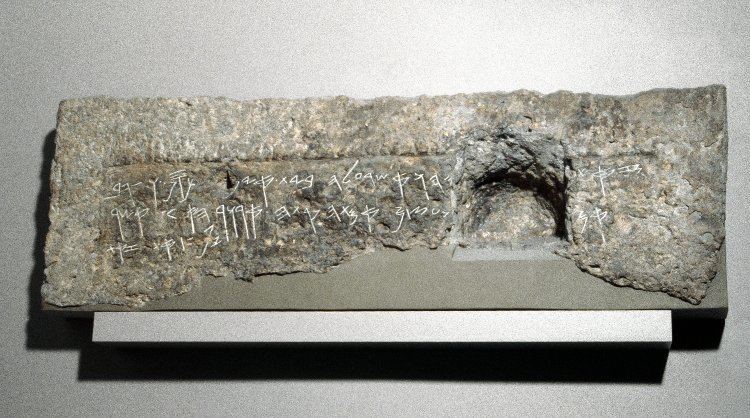Material Limestone Created 7th century BCE Present location British Museum | Size 160cm long, 52 cm high Identification 1871,1107.1, WA 125205 | |
 | ||
The Shebna inscription is an important ancient Hebrew inscription found at Siloam outside Jerusalem in 1870. After passing through various hands, the inscription was purchased by the British Museum in 1871.
Contents
The inscription is broken at the point where the tomb's owner would have been named, but biblical scholars have suggested a connection to Shebna on the basis of a verse in the bible mentioning a royal steward who was admonished for building a conspicuous tomb.
Discovery
The inscribed lintel was found in 1870 above the entrance to a cave near Jerusalem. At one stage it belonged to the French archaeologist, Charles Simon Clermont-Ganneau, before being purchased by the British Museum one year after its discovery.
Description
The limestone inscription was so severely damaged that it was not possible to completely decipher the script until 1952. Nevertheless, the inscription is significant because it allegedly describes a figure from the bible called Shebna who was sent by King Hezekiah to negotiate with the Assyrian army. The three-line Hebrew funerary inscription indicates that the cave was the tomb of Shebna, the royal steward of King Hezekiah (715–687 BC).
Inscription text
The writing is in Biblical Hebrew and can be dated to the seventh century BC. Read from right to left the inscription reads
zo't [... ...]yahu asher 'al ha bayt 'ain kesef ve zahavim [...] ve 'etsem amatah 'itah arur ha 'ish asher
yiftach 'et zo't
which is translated as:
"This is ... [... ...] ...iah, the royal steward. There is no silver or gold here, only ... [his bones] ... and the bones of his maidservant with him. Cursed be the man who opens this."Royal Steward of Judah
The royal steward or court chamberlain was a powerful figure in Ancient Judah. According to Isaiah 22:15–16, the royal steward appointed by King Hezekiah was called Shebna and he was admonished for building himself too grandiose a tomb. Although the name of royal steward is broken at the point where the official is named, it has been conjectured on the basis of the biblical verse that this monumental inscription originates from the tomb of Shebna.
